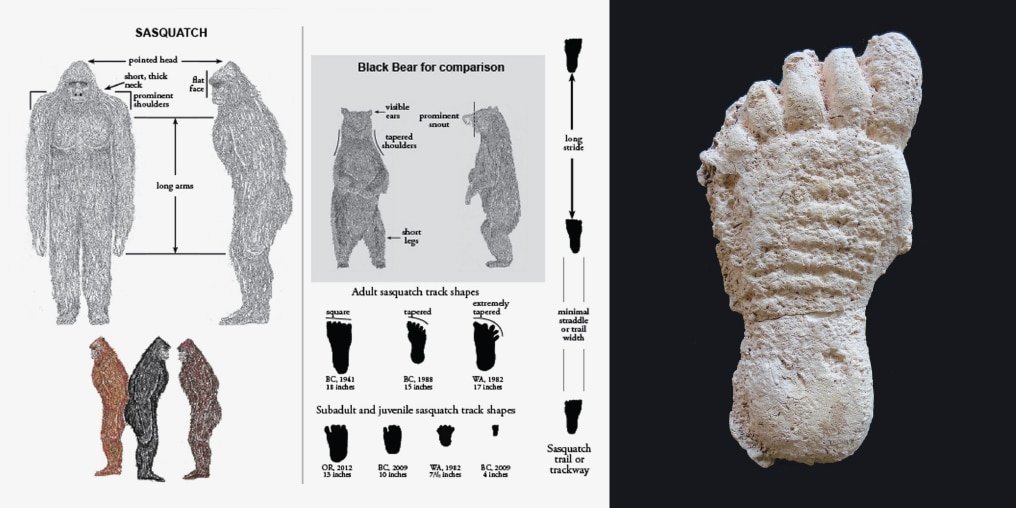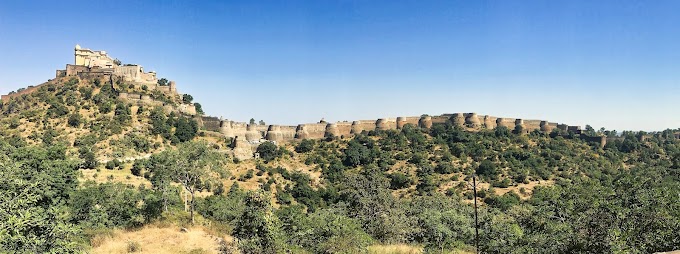For decades, stories of the mysterious Sasquatch, or "Bigfoot," have fascinated cryptozoologists, hikers, and skeptics alike. Allegedly spotted in remote forests of North America, this elusive creature is often described as a large, bipedal humanoid covered in dark fur. But how does Sasquatch, based on popular accounts, measure up to real-world animals such as polar bears, black bears, Kodiak bears, gorillas, and chimpanzees?
In this post, we’ll explore the key characteristics of these animals — their size, behavior, and footprints — to see how Sasquatch compares to both bear species and great apes.
Standing Tall: Height and Weight Comparisons
One of the most consistent features of Sasquatch sightings is its towering height. Witnesses often describe Sasquatch as being between 2.1 to 3 meters (7 to 10 feet) tall when standing upright. This is comparable to the largest of the bears and great apes.
Polar bears and Kodiak bears are the closest contenders in size when standing on their hind legs. Both of these massive bear species can reach heights of around 2.4 to 3 meters (8 to 10 feet) when standing upright. This matches the upper range of Sasquatch reports. However, while polar bears and Kodiak bears may reach comparable heights, their bulk is much greater, with both species weighing between 400 to 700 kg (880 to 1,500 pounds).
In contrast, the Sasquatch, though described as muscular and robust, is rarely reported as having the same sheer mass as these enormous bears. Based on eyewitness accounts, Sasquatch is more often described as lean but muscular, possibly weighing between 200 to 350 kg (440 to 770 pounds), which aligns more closely with the largest gorillas.
Speaking of gorillas, adult male gorillas (especially silverbacks) can stand up to 1.8 meters (6 feet) tall and weigh between 140 to 200 kg (310 to 440 pounds). While Sasquatch is generally described as taller than gorillas, their general body shape is often likened to that of a gorilla — broad shoulders, a barrel-shaped chest, and long, powerful arms. Chimpanzees, though smaller, share some physical similarities with Sasquatch in terms of bipedalism and agility. A male chimpanzee stands about 1.2 meters (4 feet) tall and weighs around 40 to 60 kg (88 to 130 pounds).
On All Fours: Quadrupedal Comparisons
Another crucial point of comparison is whether Sasquatch, like bears and great apes, uses a quadrupedal stance in addition to walking upright. While Sasquatch is often depicted as walking upright most of the time, some reports suggest it may drop to all fours at times, similar to great apes.
Bears, especially polar, black, and Kodiak bears, walk on all fours most of the time. Their height on all fours ranges from 1.2 to 1.6 meters (4 to 5 feet) for polar and Kodiak bears, and around 0.8 to 1 meter (2.6 to 3.3 feet) for black bears.
 |
| https://thecollectivemags.ca/the-science-of-sasquatch/ |
Gorillas and chimpanzees primarily walk on all fours in a style called knuckle-walking, in which they support their weight on the knuckles of their hands. A gorilla on all fours typically measures around 1 meter (3 feet) in height, while a chimpanzee’s height on all fours is closer to 0.7 to 0.9 meters (2.3 to 3 feet).
If Sasquatch is capable of moving both bipedally and quadrupedally, as some witnesses claim, its all-fours height would likely fall somewhere between that of a gorilla and a bear — perhaps around 1.2 to 1.5 meters (4 to 5 feet). This would be a significant size for a quadrupedal creature, further adding to the mystique of Sasquatch’s physical prowess.
Paw vs. Foot: The Footprint Debate
Sasquatch's footprints are another point of comparison with bears and primates. Many alleged Sasquatch tracks have been found over the years, often measuring 35 to 45 cm (14 to 18 inches) in length, much larger than human footprints. These tracks also often show signs of toes, similar to those found in primates.
Polar bears and Kodiak bears have paws that are massive but shorter than Sasquatch’s alleged prints. Polar bear paw prints measure about 30 cm (12 inches) long, and Kodiak bears’ paw prints are of a similar size. Black bear paw prints, on the other hand, are much smaller, typically measuring 18 cm (7 inches) long.
 |
| https://sasquatchthelegend.com/blogs/latest-news/footprints-in-the-snow |
While Sasquatch prints appear much larger than any bear’s paw print, gorilla footprints measure around 20 to 30 cm (8 to 12 inches) in length, while chimpanzee footprints are typically smaller, around 15 cm (6 inches). These great apes, like humans, have opposable toes, which aid in climbing and grasping. While Sasquatch’s toes are often described as being human-like, the alleged footprints show no opposable toes, making it distinct from both gorillas and chimpanzees.
Diet and Behavior: Omnivores vs. Herbivores
Bears are generally omnivorous, meaning they consume both plant and animal matter, though their diet varies depending on the species. Polar bears are primarily carnivorous, relying heavily on seals and other marine mammals for sustenance. Kodiak bears and black bears, however, have a more varied diet, consuming berries, roots, fish, and small mammals.
While no one has observed a Sasquatch's eating habits, it is speculated that, like bears, it may be an omnivore. Some researchers suggest that Sasquatch may forage for plants, berries, and even hunt small animals, much like black bears and Kodiak bears. The terrain of Sasquatch sightings, often in heavily forested or mountainous regions, would provide ample resources for such a diet.
Gorillas and chimpanzees are primarily herbivorous, with gorillas eating a diet rich in leaves, stems, and fruit. Chimpanzees have a more varied diet and are known to hunt small animals on occasion, particularly monkeys. If Sasquatch shares behavioral traits with great apes, it’s possible that its diet would consist mainly of plant material with occasional forays into opportunistic hunting or scavenging.
Intelligence and Social Structure
One of the most intriguing aspects of Sasquatch lore is its presumed intelligence. Many who believe in Sasquatch describe it as a creature capable of problem-solving and evading detection, possibly even living in social groups.
Among the animals we're comparing, chimpanzees are the most intelligent, known for their ability to use tools, form complex social hierarchies, and display a wide range of emotions. Gorillas, though less inclined to tool use, are also highly intelligent and social, living in tight-knit groups.
Bears, on the other hand, are generally solitary animals. They display intelligence in hunting and survival but lack the complex social structures and tool use seen in great apes.
If Sasquatch exists, its intelligence is likely closer to that of a gorilla or chimpanzee, capable of living in family units and exhibiting a higher level of cognition compared to bears.
Conclusion: How Sasquatch Stands Apart
In comparing Sasquatch to real-world animals like polar, black, and Kodiak bears as well as gorillas and chimpanzees, we find that Sasquatch occupies a unique middle ground. It reportedly shares its size and strength with the largest bears but also exhibits bipedalism and a more human-like footprint, which links it to great apes.
While Sasquatch remains a creature of legend, these comparisons provide an interesting lens through which we can explore the characteristics of a hypothetical creature that seems to blend traits from the animal kingdom’s largest and most intelligent species. Whether Sasquatch is real or myth, the comparisons to bears and primates highlight just how diverse and extraordinary nature can be.
.png)






0 Comments